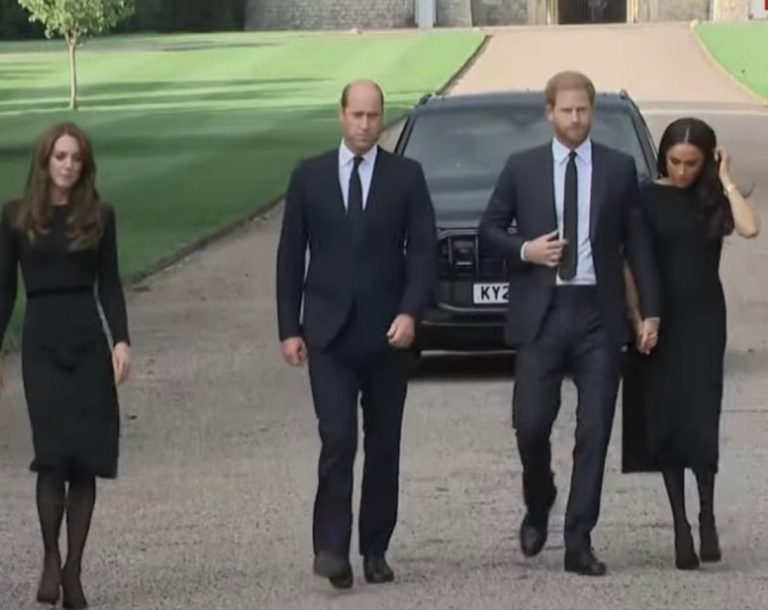Negative Body Language In Relationships: What It Means and Why It Matters
Negative body language in relationships can have a significant impact on the way we communicate and connect with others. It’s amazing how much we can say without uttering a word! But what exactly is negative body language, and how does it affect our relationships? Let’s dive in and explore this fascinating topic together.
Why Body Language Matters in Relationships
Body language includes gestures, posture, facial expressions, eye contact, and even how close we stand to someone. These subtle signals often speak louder than words.
Why Body Language Matters in Relationships
In any relationship — romantic, familial, or platonic — communication goes far beyond words. In fact, studies show that a significant portion of communication is non-verbal. Body language, facial expressions, and tone of voice often speak louder than the words we say.
Here’s why body language is so important in relationships:
1. It Reveals True Emotions
People can say one thing while feeling something entirely different. Body language often betrays hidden emotions — like irritation behind a polite “I’m fine” — allowing partners to better understand what’s really going on.
2. It Builds or Breaks Trust
Consistent, open body language fosters trust. On the other hand, defensive postures or avoiding eye contact can create suspicion or insecurity. Trust isn’t just built on what we say — it’s reinforced by how we behave physically.
3. It Affects Emotional Intimacy
Small physical cues like leaning in, touching a hand, or maintaining eye contact can make someone feel seen, heard, and loved. Likewise, cold or closed-off gestures can create emotional distance over time.
4. It Helps De-escalate or Escalate Conflict
During disagreements, body language can either cool things down or fan the flames. A calm posture and soft eye contact can soothe tensions, while aggressive gestures or turning away can make things worse.
5. It Sends Signals Even When You’re Silent
Even when no words are spoken, your body is still communicating. That silence — paired with a heavy sigh or a clenched jaw — might say more than an argument ever could.
6. It Reflects the Health of the Relationship
Couples and close relationships often fall into non-verbal rhythms. When those rhythms become cold, tense, or hostile, it’s often a reflection of deeper issues. Tuning into body language can help detect and address problems early.
In short, body language is the invisible thread that connects (or disconnects) two people. Being aware of these signals — both your own and your partner’s — can lead to deeper understanding, more effective communication, and a stronger emotional bond.
Common Examples of Negative Body Language in Relationships
Let’s look at some of the most common forms of negative body language and what they often signal:
1. Crossed Arms
- What it may suggest: Defensiveness, resistance, or being emotionally closed off.
- In a relationship: This posture can signal that one partner is not open to listening or is feeling attacked.
2. Avoiding Eye Contact
- What it may suggest: Dishonesty, discomfort, guilt, or lack of interest.
- In a relationship: Lack of eye contact during conversations may make a partner feel ignored, distrusted, or disconnected.
3. Eye Rolling
- What it may suggest: Contempt, sarcasm, or dismissiveness.
- In a relationship: Eye rolling can be incredibly damaging — it’s often seen as a sign of disrespect and is considered a predictor of relationship breakdown according to relationship experts like Dr. John Gottman.
4. Turning Away While Speaking
- What it may suggest: Disinterest, avoidance, or unwillingness to engage.
- In a relationship: This can feel like emotional abandonment in the moment, as it signals detachment or rejection.
5. Heavy Sighing or Groaning
- What it may suggest: Frustration, impatience, or annoyance.
- In a relationship: These audible cues can escalate a conversation by making the other partner feel like a burden.
6. Fidgeting or Checking the Phone
- What it may suggest: Anxiety, impatience, or lack of attention.
- In a relationship: If done during serious conversations, it can seem like the person is emotionally absent or doesn’t care.
7. Pointing Fingers
- What it may suggest: Accusation, blame, or dominance.
- In a relationship: This aggressive gesture can create a defensive response and shut down meaningful dialogue.
8. Tight Lips or Jaw Clenching
- What it may suggest: Suppressed anger, frustration, or stress.
- In a relationship: These micro-expressions can create tension and unease, even if the partner hasn’t said a word.
9. Sudden Movements or Jerky Gestures
What it may suggest: Agitation, anger, or emotional imbalance.
In a relationship: These abrupt actions can create a sense of unpredictability or fear, making it hard for the other partner to feel safe or grounded.
10. Stiff Posture
What it may suggest: Tension, discomfort, or suppressed emotions.
In a relationship: A rigid posture can signal that a partner is not relaxed or open, potentially indicating emotional withdrawal or stress.
11. Creating Physical Distance
What it may suggest: Avoidance, disinterest, or emotional detachment.
In a relationship: Backing away or increasing physical space can signal a desire to disconnect, which can make the other person feel rejected or unimportant.
12. Facial Expressions That Don’t Match Words
What it may suggest: Incongruence, insincerity, or emotional confusion.
In a relationship: When facial expressions don’t align with what’s being said, it can lead to mistrust or the feeling that a partner is hiding something.
13. Lack of Facial Expressions
What it may suggest: Emotional numbing, detachment, or fatigue.
In a relationship: A blank or expressionless face may suggest disinterest or emotional shutdown, making the other person feel emotionally isolated.
14. Closed-Off Gestures (like hands in pockets or behind back)
What it may suggest: Nervousness, defensiveness, or secretiveness.
In a relationship: These subtle gestures can signal that someone is withholding emotions or not fully present, which can block emotional intimacy.
15. Shaking the Head While the Partner is Talking
What it may suggest: Disagreement, dismissal, or disapproval.
In a relationship: This gesture can feel invalidating, suggesting that one partner isn’t willing to consider the other’s viewpoint.
16. Consistently Facing Away During Conflict
What it may suggest: Withdrawal, stonewalling, or unwillingness to engage.
In a relationship: This can be deeply hurtful, making the other partner feel invisible or unworthy of attention.
The Psychological Impact of Negative Body Language
Negative body language doesn’t just harm communication — it affects how safe and valued someone feels in the relationship. Over time, repeated non-verbal negativity can lead to:
- Emotional withdrawal
- Increased misunderstandings
- Chronic defensiveness
- Loss of intimacy and connection
- Growing resentment and unresolved conflict
In many cases, people don’t even realize they’re using negative body language — it becomes a subconscious habit, especially during stress or conflict.
How to Address Negative Body Language in Relationships
1. Self-Awareness is Step One
Before addressing your partner’s body language, look inward. Are you closing yourself off without realizing it? Recording yourself (if you’re okay with it), or reflecting after conversations can help.
2. Create a Safe Space for Feedback
Discussing body language requires trust. Use “I” statements like:
“I feel distant when we avoid eye contact during conversations.”
Avoid accusing language that may trigger defensiveness.
3. Replace with Positive Signals
If you catch yourself crossing your arms, try to relax them or place your hands on your lap. Replace avoidance with gentle eye contact, and frustration with calm, open gestures.
4. Practice Mindful Listening
Nod occasionally, face your partner, and use small verbal cues like “I see,” or “Go on.” These show you’re emotionally present.
5. Use Humor to Diffuse Tension
Sometimes, pointing out negative body language with light humor (when appropriate) can reduce tension and create space for a productive conversation.
“Whoa, did I just see an Olympic-level eye roll? Let’s unpack that.”
6. Seek Professional Support
If negative patterns persist, couples therapy or communication coaching can help identify deeper issues and build healthier habits.
Key Takeaways: Negative Body Language in Relationships
- Eye rolling can convey disrespect and dismissiveness.
- Crossed arms and closed off body posture indicate defensiveness.
- Excessive fidgeting might suggest discomfort or nervousness.
- Lack of eye contact can reflect disinterest or dishonesty.
- Aggressive gestures, like pointing fingers or raised voices, show hostility.
Frequently Asked Questions
When it comes to relationships, body language plays a crucial role in communication. Negative body language can hinder effective communication and strain relationships. Here are some common questions and answers related to negative body language in relationships:
1. How does negative body language affect relationships?
It can send the wrong message — like disinterest or hostility — even without saying a word. This can cause tension, misunderstandings, and emotional distance over time.
2. How can I recognize negative body language?
Watch for signs like crossed arms, lack of eye contact, eye-rolling, tense posture, or sighing. These often reflect discomfort, frustration, or disconnection.
3. How can I improve my body language?
Start with self-awareness. Use open gestures, make eye contact, smile genuinely, and lean in while listening. Active listening with body language goes a long way.
4. Can body language affect trust?
Absolutely. Defensive or closed-off body language can make a partner feel distant or suspicious. Open and positive body language helps build trust and closeness.
5. How do we fix negative body language?
Talk about it. Be honest and kind when addressing each other’s cues. Replace negative habits with positive ones, and practice active listening with empathy.
What Your Body Language Says About Your Relationship
Final Thoughts: Body Language is a Love Language Too
In relationships, it’s not just what we say — it’s how we say it, and even more importantly, how we show it.
While negative body language is often subtle and unintentional, its impact can be powerful. The good news? With awareness, empathy, and a willingness to grow, we can flip the script — and make our body language work for our relationships, not against them.
After all, love isn’t just spoken. It’s seen in a soft glance, an open stance, a genuine smile — and yes, even a shoulder squeeze after a tough day.
Being aware of your body language can help you communicate effectively and strengthen your relationships.


